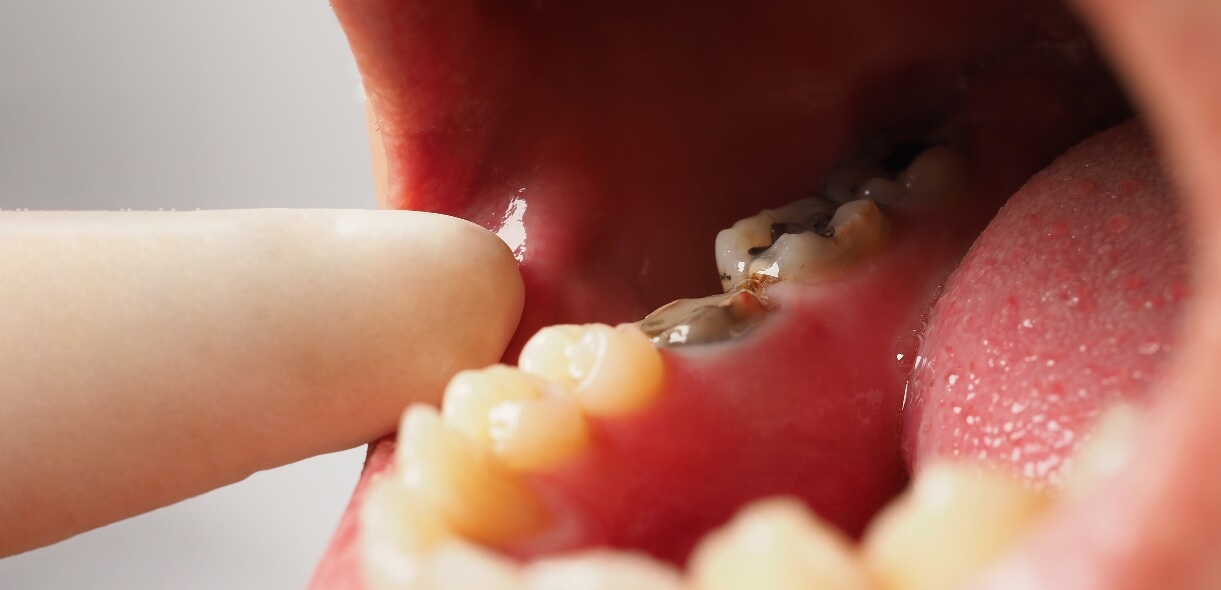
Your wisdom teeth, those molars lurking at the back of your mouth, can sometimes be troublemakers. And if one of them develops a cavity, it can cause a whole new level of discomfort. But fret not! In this guide, we’ll walk you through what you should do if your wisdom tooth has a cavity, ensuring you navigate this dental dilemma with ease.
What is a Wisdom Tooth Cavity?
First things first, let’s understand what we’re dealing with. A cavity in your wisdom tooth is essentially a hole or decay in the tooth caused by bacteria. Wisdom teeth, being the hardest to reach and clean, are particularly prone to cavities.
Symptoms of a Wisdom Tooth Cavity
How do you know if that nagging pain in your mouth is indeed a cavity in your wisdom tooth? Look out for these common symptoms, as they can help you identify the issue and take prompt action to address it:
Persistent Toothache: One of the most telltale signs of a cavity in your wisdom tooth is a persistent, throbbing toothache. This pain may come and go but tends to worsen over time, especially when you chew or apply pressure to the affected tooth.
Sensitivity to Hot or Cold Foods: If you find yourself wincing in pain when you eat or drink something hot or cold, it could be a sign of a cavity in your wisdom tooth. Tooth sensitivity occurs when the decay reaches the inner layers of the tooth, exposing the sensitive nerve endings.
Pain When Chewing or Biting Down: Cavities weaken the structure of the tooth, making it more prone to pain and discomfort, particularly when you chew or bite down on food. If you experience sharp or shooting pains when eating, it may indicate a cavity in your wisdom tooth.
Swelling Around the Affected Area: Inflammation and swelling around the gum line near your wisdom tooth can signal an underlying dental issue, including a cavity. This swelling may be accompanied by redness and tenderness, indicating an infection or inflammation caused by the cavity.
Bad Breath or Foul Taste in the Mouth: Cavities can trap food particles and bacteria, leading to the development of plaque and tartar, which contribute to bad breath. If you notice persistent bad breath or a foul taste in your mouth, especially near the affected tooth, it could be a sign of a cavity.
Visible Holes or Dark Spots on the Tooth: In some cases, you may be able to see visible signs of decay on your wisdom tooth. This could include the presence of holes, pits, or dark spots on the surface of the tooth, indicating that decay has progressed to a more advanced stage.
What Should You Do?
Now that you suspect a cavity in your wisdom tooth, it’s crucial to take the right steps to address the issue promptly. Here’s an in-depth guide on what you should do to manage a cavity in your wisdom tooth effectively:
Schedule a Dental Appointment
Take your time with your dental health. Call your dentist as soon as you notice any symptoms of a cavity in your wisdom tooth. Prompt action can prevent the cavity from worsening and potentially save your tooth from further damage.
Practice Rigorous Oral Hygiene
While waiting for your dental appointment, maintain impeccable oral hygiene to prevent the cavity from progressing. Brush your teeth thoroughly at least twice a day using fluoride toothpaste. Also, it’s important to pay extra attention to the affected area as well. Floss daily to remove plaque and food debris from between your teeth and along the gum line.
Use Fluoride Mouthwash
Incorporate fluoride mouthwash into your oral care routine to strengthen your tooth enamel and inhibit the growth of cavity-causing bacteria. Swish the mouthwash around your mouth for at least 30 seconds, ensuring it reaches the back of your mouth where your wisdom tooth is located.
Apply Dental Pain Relief Gel
Over-the-counter dental pain relief gels containing benzocaine or clove oil can temporarily alleviate discomfort associated with a wisdom tooth cavity. Apply a small amount of gel directly to the affected tooth and surrounding gums, following the product’s instructions carefully.
Use Ice Packs to Reduce Swelling
If you’re experiencing swelling or inflammation around your wisdom tooth, apply an ice pack or cold compress to the outside of your cheek for 15-20 minutes at a time. Cold therapy can help constrict blood vessels and reduce pain and swelling in the affected area.
Treatment Options
When it comes to treating a cavity in your wisdom tooth, your dentist will evaluate the extent of the decay. Then, they’ll recommend the most appropriate treatment option to restore your oral health. Here’s a detailed overview of the various treatment options available for addressing a wisdom tooth cavity:
Dental Fillings: For small to moderate cavities that haven’t penetrated too deeply into the tooth structure, your dentist may recommend a dental filling. Fillings help restore the tooth’s shape, function, and strength while preventing further decay.
Inlays or Onlays: In cases where the cavity is too large for a traditional filling but not extensive enough to require a dental crown, your dentist may suggest an inlay or onlay restoration. Inlays fit within the cusps of the tooth, while onlays cover one or more cusps.
Root Canal Therapy: If the cavity has reached the innermost layer of the tooth, known as the pulp, it can lead to inflammation, infection, and severe pain. In such cases, root canal therapy may be necessary to remove the infected or damaged pulp tissue.
Consult With Your Dentist: Get expert advice from a Dentist in Jamaica Plain, MA. Our article offers essential tips for addressing this dental concern effectively. Don’t let a cavity ruin your smile, consult now!
Dealing with a cavity in your wisdom tooth can be uncomfortable, but with the right steps, you can address the issue effectively. Remember to schedule a dental appointment promptly, practice good oral hygiene, and follow your dentist’s recommendations for treatment. By taking proactive measures, you can safeguard your oral health and keep your smile shining bright. So, if you suspect a cavity in your wisdom tooth, don’t wait—take action today!


